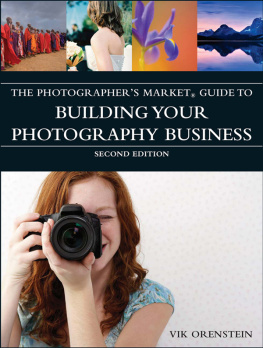100 Secrets for a $100,000 Career inMicrostock Photography
By Devin Elnick
Smashwords Edition
Copyright 2012 Devin Elnick
Smashwords Edition, LicenseNotes
This ebook is licensed for your personalenjoyment only. This ebook may not be re-sold or given away toother people. If you would like to share this book with anotherperson, please purchase an additional copy for each recipient. Ifyoure reading this book and did not purchase it, or it was notpurchased for your use only, then please return to Smashwords.comand purchase your own copy. Thank you for respecting the hard workof this author.
TABLE OF CONTENTS:
Get to Know the Market
Create Your Business Plan
Tips for effective preparation anduploading
Ensure your images make an impact
Attract customers with effective titles,keywords and descriptions.
Focus on subject matter that sellswell.
Analyze your data and make smartdecisions
The 10 commandments for success inmicrostock.
INTRODUCTION
You can do this.
Odds are your photography or illustrationskills are greater than mine. Id even guess that the averagemicrostock contributor has technical and artistic talents fargreater than my own.
But why am I selling so much more than theaverage contributor? By every measure Ive seen third party sitesthat collect data and rank artists, as well in the agencies ownrankings Im in the top 50 or so microstock contributors in termsof sales out of an estimated 50,000 people.
I have succeeded because I treat microstocklike a business. I have a background in marketing, so I apply abusiness perspective to every decision I make. Before I shootanything or create a new illustration, I ask myself, Will itsell? If I have doubts, I think of something else.
Im not out to beautify the world withendless shots of puppy dogs and rainbows. Im trying to sell asmuch as possible and have made artistic fulfillment a secondarygoal. If you have a similar mindset, youre in the right place.
Next, let me share the goal of this guide,and tell you what it IS and ISNT.
This guide will NOT give you technicalpointers on photography or illustration. It will NOT go in depth onthe importance of things like focus, avoiding noise, etc. It willNOT tell you how to apply to the agencies. There are countlessbooks and websites out there to give you the by-the-numbers,technical info on how to create, how to apply, how to upload, etc.My goal is telling you how to SELL.
This guide WILL approach microstock from abusiness persons perspective. How do you find topics that willsell? How can you differentiate yourself from your competition? Howcan you present your material to grab attention? How do youeffectively title, describe and keyword your work for goodplacement in searches? And how do you measure your progress andadjust your strategy accordingly?
Some of the advice in this guide may seemlike common sense. In fact, to me, all of it seems like it belongsin a Marketing 101 textbook. But know this: by and large, yourcompetition is NOT doing these things, or is doing them verypoorly. I believe this is why Ive found it relatively easy tobuild a six-figure microstock income, and why if you doeverything right you have a fighting chance at doing verywell.
So lets get started
I. RESEARCH
Getto Know the Market
1. Build acore understanding.
Before you do anything else, you must firstunderstand what microstock is and what it isnt. If you blindlyattempt to upload all your vacation snapshots from your camera andhard drive, thinking that buyers are anxiously awaiting yourmasterpieces and youll be richly rewarded, you will be sorelydisappointed.
Microstock is a low-cost marketplace made upof a dozen or so agencies (many more, but only the top twelve or somatter). People in need of pictures for a variey of needs willsearch on the agency sites just like you search for information ona particular subject using an Internet search engine. They want tofind what they need as quickly as possible, which means being nearthe top of the search results, and having content that jumps offthe page, will get clicked on and bought.
Understand that microstock agencies areconcerned first and foremost with amassing a large collection ofimages that will make them money. Every image you send them willcost them money to review, and if approved, to store on its serversand serve up in search results.
They DO NOT want subject matter for whichthey already have an oversupply. They DO NOT care how beautifulyour pictures are, or how technically flawless they are, if theybelieve they will not sell.
Microstock agencies DO WANT images that meetbuyers needs and get downloaded in high numbers. Its as simple asthat. Yes, they demand quality, but these days quality is like ahigh school diploma. Everyone has it, and it simply gets you in thedoor. Once youre through the quality door, you have to proveyourself with a keen understanding of what buyers want, and youllbe rewarded.
Dont waste the agencies and your own timeby giving them what they dont want or need. Instead, develop adeep understanding of what buyers are after, looking for trendsbefore your competitors can spot them.
2. Know the agencies.
While all theagencies share the same goal getting as many image buyers to buyas many images as possible each one has different approaches andattracts different types of buyers. You will find that your salesof certain subjects will be higher on one agency than another.
As time goes on, its possible, if notlikely, that one agency will reject an uploaded image for havinglow commercial value while other agencies accept the same image.The image may go on to sell very well at the sites that acceptedit. Clearly the site that rejected it was wrong, right? Notnecessarily. While its possible that the rejection came from a newreviewer or one simply not in touch, its most likely that the sitebased its judgment on a keen awareness of the demand of its owncustomers balanced with the number of images like yours that italready has.
Think of how you shop for items you needevery day. Many stores sell everything you need, but you may preferto buy your clothes from Store A and your toilet paper from StoreB. Image buyers have the same preferences. They may feel theres abetter selection of lifestyle pictures on Agency A and a widerarray of business concepts at Agency B.
Do sample searches at each of the agenciesand see how your own images or those similar to yours stack upagainst the best sellers at each. Dont simply copy those that areselling (youll find this to be a recurring theme throughout thisguide), but use these insights to help steer you toward uploadingmore of what each agency needs. You may be lucky and find that allagencies accept everything you give them But if not, dont despair.Just send each agency what it needs and dont waste your time andtheirs by uploading pictures you expect will be denied.
3.Interpret industry trends wisely.
If youre just starting out, or even ifyouve been doing microstock a while, you should read what expertindustry watchers have to say about the direction of microstock,but interpret it carefully.
Some people say that while it appears theamount of money spent on microstock purchases is increasing, theamounts made by contributors is decreasing, and this is a sign thatthe sky is falling for the industry.
It is certainly true that every day more andmore people sign up as microstock contributors. And it is true thata good number of them will fail, either because competition is justtoo fierce or they dont know what they are doing.
The purpose of this guide is to help youbuck the trends and surge ahead of your many, many competitors. Ibelieve most contributors are going about microstock the wrong way,and this is why they are complaining about falling sales. They maybe veterans from the early days of microstock, when they couldupload any pictures of animals, landscapes and business people andmake a fast buck. Now all those pictures are commodities, and thoseone-time big sellers are talking about giving up.











